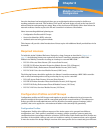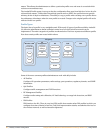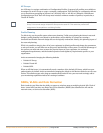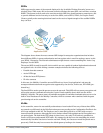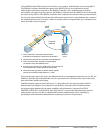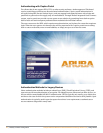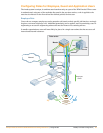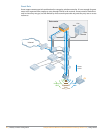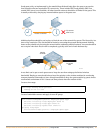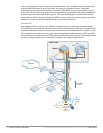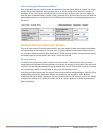
44 | Mobility Controller Configuration Campus Wireless Networks Validated Reference Design Version 3.3 | Design Guide
Authenticating with Captive Portal
For clients that do not support WPA, VPN, or other security software, Aruba supports a Web-based
captive portal that provides secure browser-based authentication. Captive portal authentication is
encrypted using SSL (Secure Sockets Layer), and can support both registered users with a login and
password or guest users who supply only an email address. Through Aruba’s integrated Guest Connect
system, captive portal can provide a secure guest access solution by permitting front-desk reception
staff to issue and track temporary authentication credentials for individual visitors.
The user connects to the SSID, which requires no authentication, and is placed in a state that requires a
login. When the user opens a web browser they will be presented with a captive portal screen asking
them to enter credentials, enter an email address, or simply accept a set of service terms.
Authentication Methods for Legacy Devices
Other authentication methods include pre-shared keys (PSK), Wired Equivalent Privacy (WEP), and
open access with no authentication or encryption. Pre-shared keys are often used on older devices, or
devices which cannot handle full 802.1X authentication. WEP is typically only used by very old devices,
and due to the ease of which the system can be compromised should not be used at all if possible. Open
authentication is typically used in open hot spots where there is no requirement to authenticate or
secure customer usage and is rarely used.




